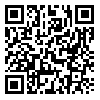BibTeX | RIS | EndNote | Medlars | ProCite | Reference Manager | RefWorks
Send citation to:
URL: http://irje.tums.ac.ir/article-1-5347-en.html
Background & Objectives : Children who work or live on the street are one of key populations at risk for HIV and hard to reach for study or providing services. Here, as a methodological paper, we present the methods and steps of a rapid assessment and response (RARE) project conducted among street children in Tehran.
Methods : We applied a mixture of qualitative (literature review, focus group discussion, in-depth interview) and quantitative (structure interview) methods to collect data from key informants in non-governmental and governmental agencies as well as street children. We applied targeted sampling to recruit key informants and time location sampling to recruit street children.
Results: The study was conducted in eight steps to recognize the involved stakeholders, define target population (street children) and to guide on how to approach them (steps 1 to 2: Initial Consultation, Study Area Profile), to map the venues and gathering spots and ethnographic findings crucial for further recruitment into surveys (steps 3 to 5: Contextual Assessment, Population and Setting Assessment, Health Issues Assessment), assess the risk behaviors (step 6: Assessment Behavior Risk and Health), evaluate the response (step 7: Intervention Assessment), and develop an operational plan for improving the services (step 8: Developing an Action Plan).
Conclusion: RARE is a participatory mix research method with sufficient flexibility to study complex health problems such as stigmatized HIV risk behaviors among high risk and hard to reach populations and also to assess the health sector response.
Received: 2015/08/16 | Accepted: 2015/08/16 | Published: 2015/08/16
| Rights and permissions | |
 |
This work is licensed under a Creative Commons Attribution-NonCommercial 4.0 International License. |





